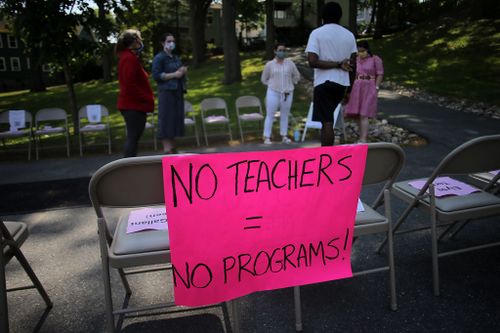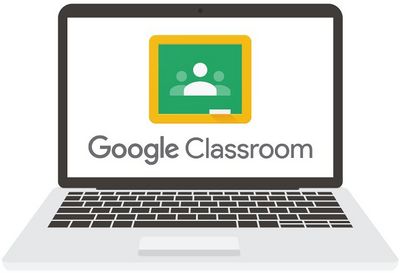Former Teacher (Gurleen): Difference between revisions
Jump to navigation
Jump to search
Gurleeng77 (talk | contribs) No edit summary |
Gurleeng77 (talk | contribs) No edit summary |
||
| (5 intermediate revisions by one other user not shown) | |||
| Line 1: | Line 1: | ||
The classroom of Ontario 2032 looks different for every student as they complete their schooling from the comfort and safety of their own home. Students approach experiential learning as text-based learning, simulated experiential learning like science labs, virtual reality field trips, and proctored exams are all conducted from a student’s home. Researchers studying Ontario’s Radical Education System have linked the lack of social interaction | [[File:WhatsApp Image 2023-11-30 at 11.27.18.jpg|500px|thumb|left|alt=Existential loss of education, because there is a lack of knowledge production between student and teacher.|Existential loss of education, because there is a lack of knowledge production between student and teacher.]] | ||
The transition from in-person to online learning severed peer relationships among youth, causing increased feelings of competitiveness through high marks. Based on these findings, critics of the Fairfield Education System have concluded that the Ontario student body of 2032 has become distant, faceless, and disconnected as a result of this new method of schooling. Some students are losing interest in their education, others are struggling to understand difficult concepts, | |||
The classroom of Ontario 2032 looks different for every student as they complete their schooling from the comfort and safety of their own home. Students approach experiential learning as text-based learning, simulated experiential learning like science labs, virtual reality field trips, and proctored exams are all conducted from a student’s home. Researchers studying Ontario’s Radical Education System have linked the lack of social interaction among youth to a drastic increase in anxiety disorders, mental health diagnoses, and general social difficulty in the province. Studies have also shown that the general confidence levels of people under the age of 18 have lowered in comparison to previous years, due to a lack of socialisation in the in-person school setting. The success of students’ academic achievement is connected with social groups, clubs, and friendships for healthy social and emotional development. | |||
The transition from in-person to online learning severed peer relationships among youth, causing increased feelings of competitiveness through high marks. Based on these findings, critics of the Fairfield Education System have concluded that the Ontario student body of 2032 has become distant, faceless, and disconnected as a result of this new method of schooling. Some students are losing interest in their education, others are struggling to understand difficult concepts, and others simply are not attending the virtual class sessions. | |||
The literacy rates of students have been severely impacted as a result of the many online tools designed to ease writing difficulties experienced by students. Students are constantly using digital writing assistant tools, such as autocorrect and ChatGPT, which has resulted in lower overall literacy rates than in previous years. The constant surveillance of proctors removes the risk of plagiarism and cheating among Ontario youth as any breach of academic honesty is immediately seen and punished. | |||
[[File:WhatsApp Image 2023-11-30 at 11.27.05.jpg|400px|thumb|right|alt=Virtual Learning Space, where Students are Learning from Artificial Intelligence.|Virtual Learning Space, where Students are Learning from Artificial Intelligence.]] | |||
Besides literacy rates, humanities subjects such as English, Social Sciences, and History have remained relatively unimpacted by the transition to online learning, with the only exception being the risk of plagiarism, thwarted by constant student surveillance. With the at-home field trips conducted by VR, humanities courses have flourished, as students can experience not only different locations but also different periods and historical contexts. Interesting to note is the shift away from the arts in the online learning format, as the at-home classroom is not conducive to the in-person, critique-based technical instruction required when learning an instrument, or painting in a certain technique, to name a couple of examples; unfortunately for the Fairfield Education System, AI cannot replicate the emotional capabilities of humanity, a requirement for participating in the arts. Subjects that are heavily numbers-based, such as Math, Physics, and Chemistry have seen little to no change in instruction, apart from lessons and tutorials being conducted by AI programs and not teachers. All Biology and Chemistry experiments are conducted through VR including chemical reactions and dissection experiments. Some traditionalists have complained that VR science laboratories do not relate abstract concepts to in-person conditions in the same way that live labs do; these complaints have not been as prevalent as other critiques of the Fairfield Education System. The optimized education experience created by AI instructors has also allowed Humanities and Arts students to engage with diverse stories and in turn, have a better understanding of global socio-political issues, identities, and stories. Students are now more critical of hegemonic figures from the Western literary canon, such as Shakespeare, as a result of this change. | |||
During this educational system’s inception, many naysayers raised concerns over students who did not have the financial means to own computers or VR headsets, pointing out the classism inherent in this mode of schooling. Immediately following the teacher strikes and mass layoffs that catapulted this education system into full effect, the money once allotted to educator salaries was used to supply every Ontario student with the technology necessary to transform their home space into a classroom. Families unhappy with FES are using private schools to boost their children’s marks and find admission into University when the current system fails them. Neurologically diverse students feel excluded from regional program schooling, as the education system is designed for marks, instead of creative assignments, learning, and conferences. Neurologically diverse students find their education to be accessible, finding more independence in navigating through life. | |||
Peer relationships are now only fostered through online platforms which serve as ‘school communities’ for students. These platforms allow students to engage in conversation through Netflix, YouTube, and Instagram. The online sphere is now the preferred meeting place as in-person interaction has become stigmatized due to the accelerating rates of anxiety produced by the FES. | |||
Latest revision as of 09:14, 30 November 2023
The classroom of Ontario 2032 looks different for every student as they complete their schooling from the comfort and safety of their own home. Students approach experiential learning as text-based learning, simulated experiential learning like science labs, virtual reality field trips, and proctored exams are all conducted from a student’s home. Researchers studying Ontario’s Radical Education System have linked the lack of social interaction among youth to a drastic increase in anxiety disorders, mental health diagnoses, and general social difficulty in the province. Studies have also shown that the general confidence levels of people under the age of 18 have lowered in comparison to previous years, due to a lack of socialisation in the in-person school setting. The success of students’ academic achievement is connected with social groups, clubs, and friendships for healthy social and emotional development. The transition from in-person to online learning severed peer relationships among youth, causing increased feelings of competitiveness through high marks. Based on these findings, critics of the Fairfield Education System have concluded that the Ontario student body of 2032 has become distant, faceless, and disconnected as a result of this new method of schooling. Some students are losing interest in their education, others are struggling to understand difficult concepts, and others simply are not attending the virtual class sessions.
The literacy rates of students have been severely impacted as a result of the many online tools designed to ease writing difficulties experienced by students. Students are constantly using digital writing assistant tools, such as autocorrect and ChatGPT, which has resulted in lower overall literacy rates than in previous years. The constant surveillance of proctors removes the risk of plagiarism and cheating among Ontario youth as any breach of academic honesty is immediately seen and punished.
Besides literacy rates, humanities subjects such as English, Social Sciences, and History have remained relatively unimpacted by the transition to online learning, with the only exception being the risk of plagiarism, thwarted by constant student surveillance. With the at-home field trips conducted by VR, humanities courses have flourished, as students can experience not only different locations but also different periods and historical contexts. Interesting to note is the shift away from the arts in the online learning format, as the at-home classroom is not conducive to the in-person, critique-based technical instruction required when learning an instrument, or painting in a certain technique, to name a couple of examples; unfortunately for the Fairfield Education System, AI cannot replicate the emotional capabilities of humanity, a requirement for participating in the arts. Subjects that are heavily numbers-based, such as Math, Physics, and Chemistry have seen little to no change in instruction, apart from lessons and tutorials being conducted by AI programs and not teachers. All Biology and Chemistry experiments are conducted through VR including chemical reactions and dissection experiments. Some traditionalists have complained that VR science laboratories do not relate abstract concepts to in-person conditions in the same way that live labs do; these complaints have not been as prevalent as other critiques of the Fairfield Education System. The optimized education experience created by AI instructors has also allowed Humanities and Arts students to engage with diverse stories and in turn, have a better understanding of global socio-political issues, identities, and stories. Students are now more critical of hegemonic figures from the Western literary canon, such as Shakespeare, as a result of this change.
During this educational system’s inception, many naysayers raised concerns over students who did not have the financial means to own computers or VR headsets, pointing out the classism inherent in this mode of schooling. Immediately following the teacher strikes and mass layoffs that catapulted this education system into full effect, the money once allotted to educator salaries was used to supply every Ontario student with the technology necessary to transform their home space into a classroom. Families unhappy with FES are using private schools to boost their children’s marks and find admission into University when the current system fails them. Neurologically diverse students feel excluded from regional program schooling, as the education system is designed for marks, instead of creative assignments, learning, and conferences. Neurologically diverse students find their education to be accessible, finding more independence in navigating through life.
Peer relationships are now only fostered through online platforms which serve as ‘school communities’ for students. These platforms allow students to engage in conversation through Netflix, YouTube, and Instagram. The online sphere is now the preferred meeting place as in-person interaction has become stigmatized due to the accelerating rates of anxiety produced by the FES.

